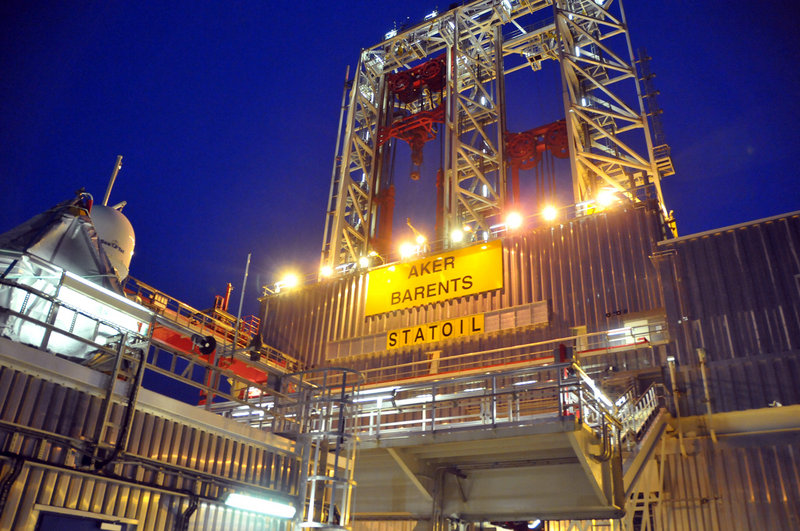OSLO – Norway is grappling with how to turn last year’s oil and gas finds in the Arctic Circle into real money as the world’s seventh-largest crude exporter seeks to sustain output after more than 40 years of extraction.
Norway, whose oil finds in the North Sea starting in 1969 helped turn it into the world’s second-richest nation per capita after Luxembourg, can’t waste time in deciding on how to transport what it finds off its northern tip down south to the rest of Europe, Petroleum and Energy Ministry Ola Borten Moe said at a conference in the Arctic town of Hammerfest this week. The issue is “when we need more gas transportation capacity, not whether,” he said.
Companies including Statoil, Norway’s largest oil producer, and Total of France, Europe’s third-biggest, last year made commercial discoveries of oil and gas in the Barents Sea, the first in more than a decade. Norway is moving into the waters off its northern tip to boost output after oil production fell by half in the past decade amid dwindling North Sea output.
The Nordic country also offered 72 new blocks in the Barents Sea for exploration as part of its 22nd licensing round. Statoil, which is 67 percent-owned by the Norwegian government, signaled it may boost the pace of production at its Snohvit gas field, the only producing deposit in the Barents Sea, to free up transport facilities and send more gas south.
The company would reduce the commercial life of Snohvit by 20 years to 2030 should it push ahead with plans to double production capacity, a spokesman said.
“We’re now starting to build a production cluster here from scratch,” Oeystein Michelsen, Statoil’s executive vice president of development and production in Norway, said on April 24 in Hammerfest. “The question is should we aim to produce more so we can open up capacity for our new fields later.”
Statoil’s Snohvit sends gas to the Melkoeya plant in Hammerfest where it’s turned into liquefied natural gas and put on tankers for shipment as far away as Japan. At issue is whether Norway should invest in pipelines that will connect to its network in the Norwegian and North Sea that is hooked up with continental Europe.
Gassco, Norway’s gas network operator, in January proposed a pipeline to tap the Barents Sea deposits. An analysis of resources showed there may be a need for a 25 billion-krone ($4.4 billion) pipe to connect with existing facilities in the Norwegian Sea by 2020, the operator said.
Copy the Story Link
Send questions/comments to the editors.



Success. Please wait for the page to reload. If the page does not reload within 5 seconds, please refresh the page.
Enter your email and password to access comments.
Hi, to comment on stories you must . This profile is in addition to your subscription and website login.
Already have a commenting profile? .
Invalid username/password.
Please check your email to confirm and complete your registration.
Only subscribers are eligible to post comments. Please subscribe or login first for digital access. Here’s why.
Use the form below to reset your password. When you've submitted your account email, we will send an email with a reset code.